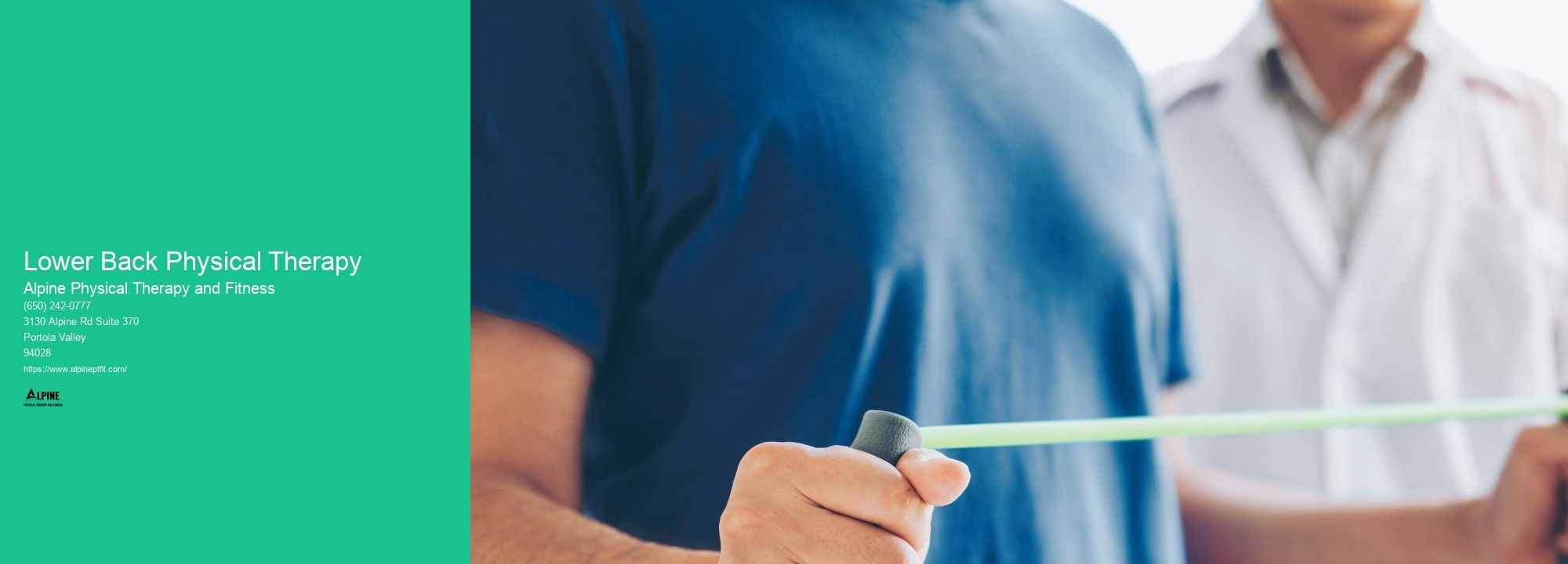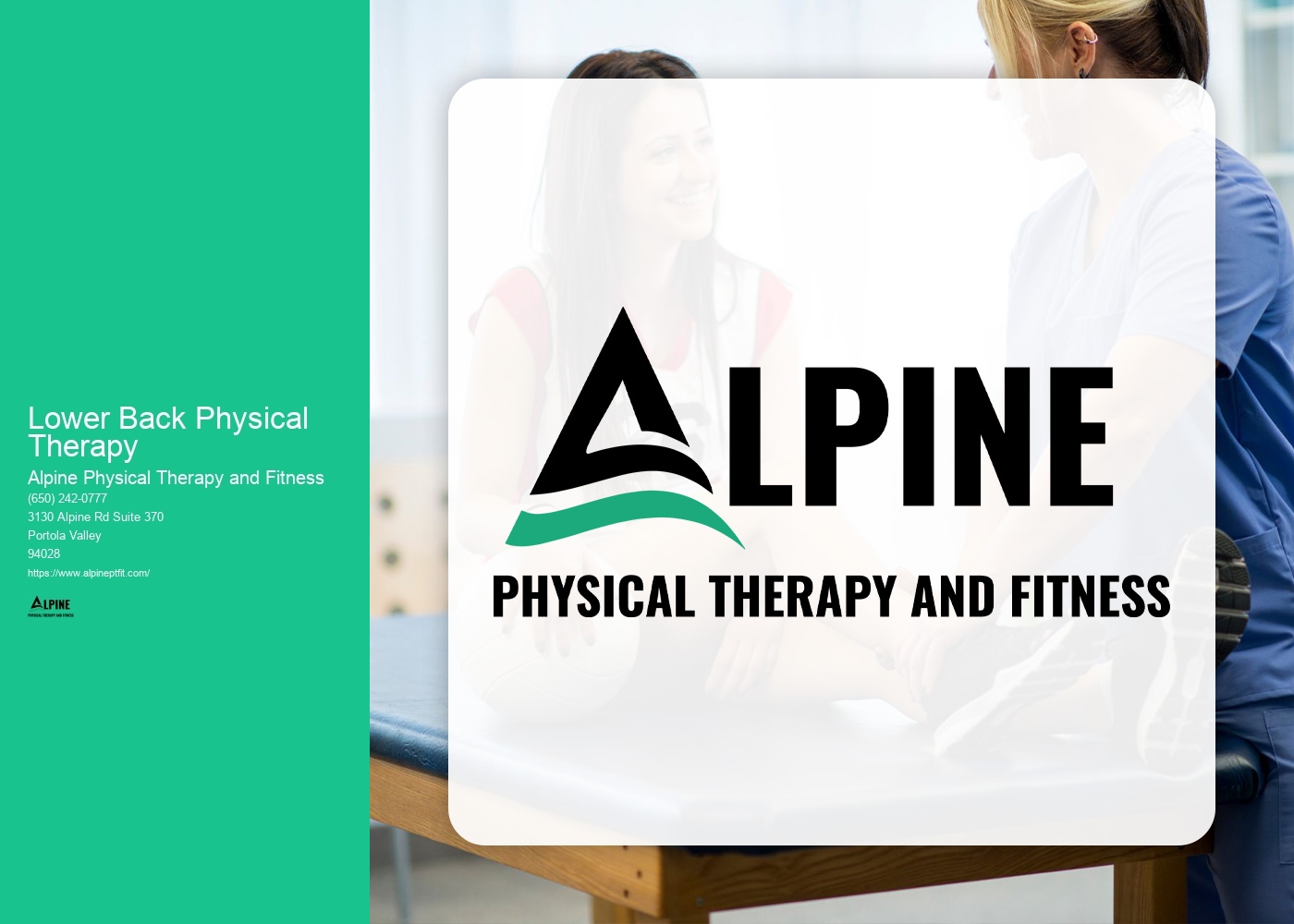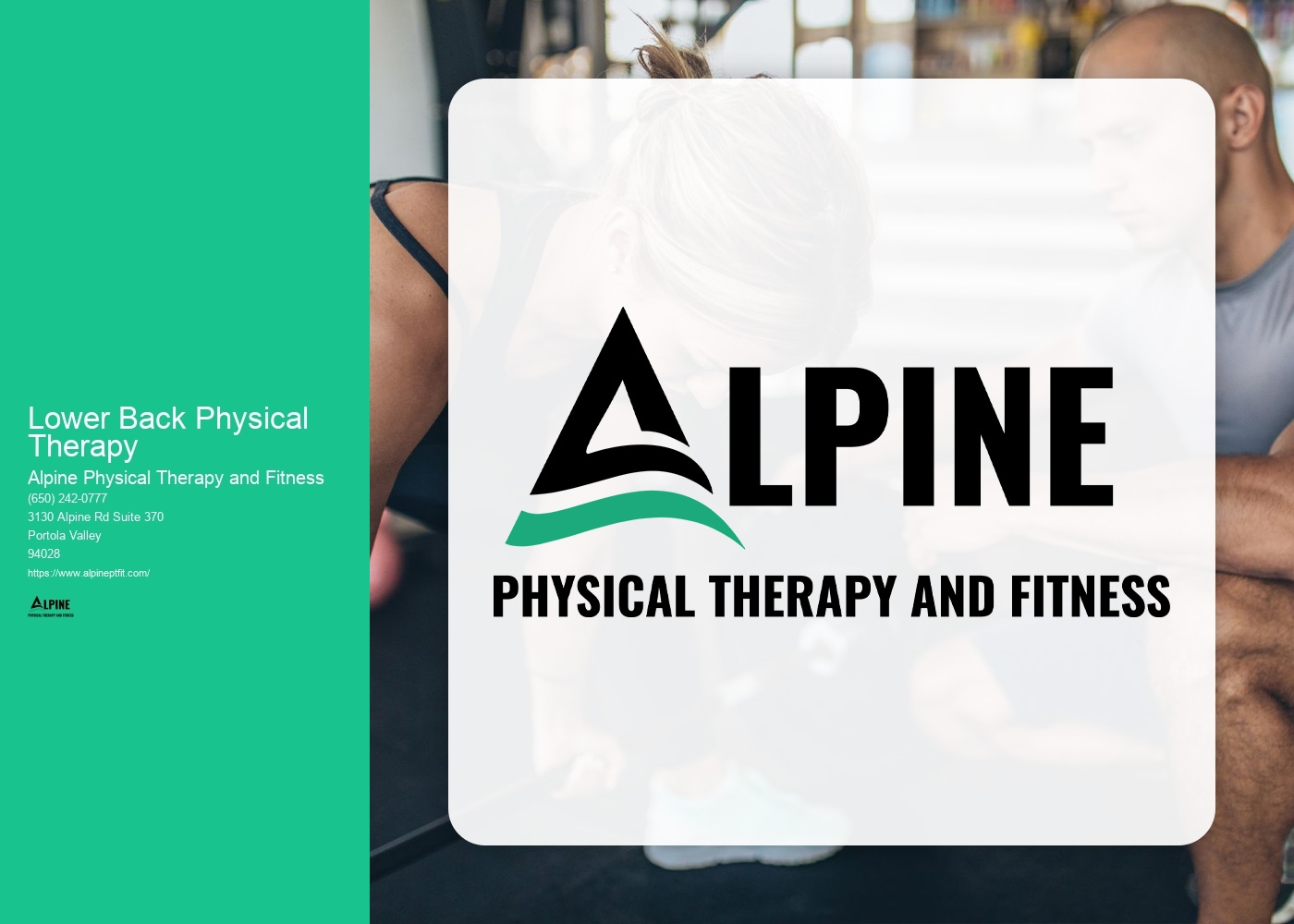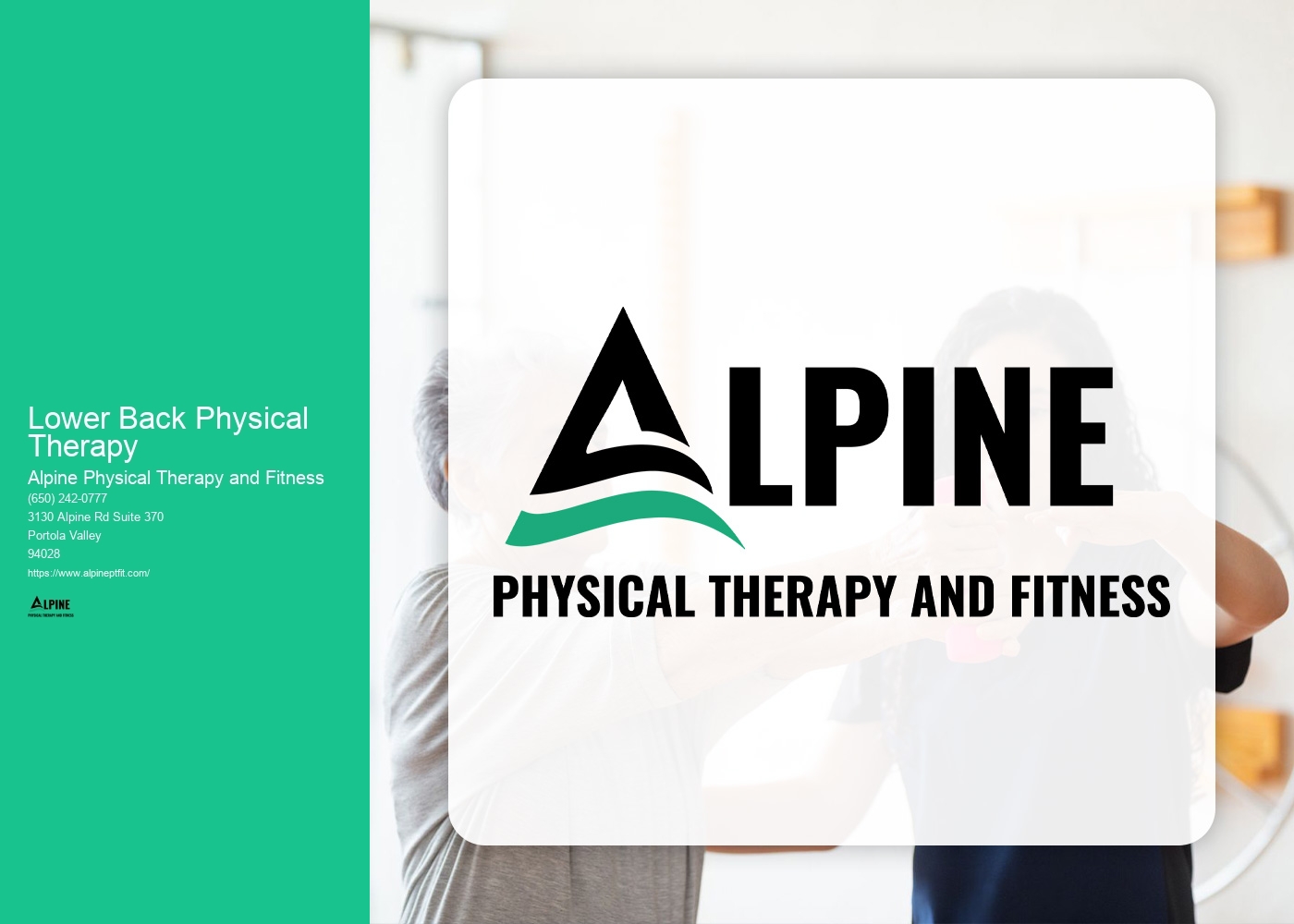

When it comes to relieving lower back pain, there are several effective exercises that can help. One of the most recommended exercises is the pelvic tilt, which involves lying on your back with your knees bent and gently tilting your pelvis upward. This exercise helps to strengthen the muscles in the lower back and improve stability. Another beneficial exercise is the bird dog, which involves getting on all fours and extending one arm and the opposite leg while maintaining a neutral spine. This exercise helps to improve core strength and stability, which can alleviate lower back pain. Additionally, exercises such as bridges, planks, and gentle stretches can also be helpful in relieving lower back pain.
The time it takes to see improvement in lower back pain with physical therapy can vary depending on the individual and the severity of the condition. In general, most people start to experience some relief within a few weeks of starting physical therapy. However, it may take several months of consistent therapy sessions and exercises to see significant improvement. It is important to note that everyone's journey to recovery is unique, and it is essential to follow the guidance of a qualified physical therapist to ensure proper progress and avoid further injury.
Physical therapy can be beneficial for individuals with herniated discs in the lower back. A physical therapist can develop a personalized treatment plan that includes exercises and techniques to help alleviate pain, improve mobility, and strengthen the surrounding muscles. These may include exercises to improve core stability, stretches to relieve pressure on the affected area, and manual therapy techniques to reduce inflammation and promote healing. Physical therapy can also provide education on proper body mechanics and posture to prevent further strain on the lower back.

When recovering from a lower back injury, there are certain stretches and movements that should be avoided to prevent further damage. It is important to avoid any exercises or activities that cause pain or discomfort. Movements that involve heavy lifting, twisting, or bending at the waist should be approached with caution or avoided altogether. It is crucial to listen to your body and work closely with a physical therapist to determine which movements are safe and appropriate for your specific condition. Gradually reintroducing activities and exercises under the guidance of a professional can help prevent re-injury and promote a safe recovery.
Lower back pain can have various causes, and physical therapy can address many of them. Some common causes of lower back pain that can be addressed through physical therapy include muscle strains, ligament sprains, herniated discs, degenerative disc disease, and poor posture. Physical therapy aims to reduce pain, improve mobility, and strengthen the muscles that support the spine. Through a combination of exercises, stretches, manual therapy techniques, and education on proper body mechanics, physical therapy can help individuals manage and alleviate lower back pain caused by these conditions.

In most cases, a referral from a doctor is not necessary to start physical therapy for lower back pain. Many physical therapy clinics accept direct access, which means individuals can seek treatment without a referral. However, it is always a good idea to consult with a healthcare professional, such as a primary care physician or orthopedic specialist, to ensure that physical therapy is the appropriate course of action for your specific condition. They can provide a diagnosis, rule out any underlying medical conditions, and provide guidance on the best treatment options for your lower back pain.
Making certain lifestyle changes and modifications can help prevent future episodes of lower back pain. Maintaining a healthy weight, engaging in regular exercise to strengthen the core and back muscles, and practicing good posture are all important factors in preventing lower back pain. It is also essential to use proper body mechanics when lifting heavy objects, avoiding prolonged sitting or standing in one position, and taking regular breaks to stretch and move throughout the day. Additionally, managing stress levels, getting enough sleep, and avoiding smoking can also contribute to overall spine health and reduce the risk of lower back pain. Consulting with a physical therapist can provide personalized recommendations and guidance on lifestyle modifications to prevent future episodes of lower back pain.

Physical therapy can indeed improve performance in professional athletes. By addressing specific injuries or imbalances, physical therapists can help athletes regain strength, flexibility, and range of motion, allowing them to perform at their best. Through targeted exercises and techniques, physical therapy can also enhance an athlete's overall conditioning, endurance, and agility. Additionally, physical therapists can provide guidance on injury prevention strategies, helping athletes avoid future setbacks and maintain optimal performance. With their expertise in biomechanics and movement analysis, physical therapists can tailor treatment plans to the unique needs of each athlete, maximizing their potential and minimizing the risk of re-injury. Overall, physical therapy plays a crucial role in optimizing performance and ensuring the long-term success of professional athletes.
Physical therapy can play a crucial role in addressing chest pain in patients with angina. Through a comprehensive approach, physical therapists aim to improve cardiovascular health, reduce symptoms, and enhance overall quality of life. They may employ various techniques such as aerobic exercise, strength training, and flexibility exercises to improve heart function, increase blood flow, and reduce the workload on the heart. Additionally, physical therapists may provide education on proper breathing techniques, stress management, and lifestyle modifications to help manage angina symptoms. By tailoring treatment plans to individual needs, physical therapy can effectively alleviate chest pain and improve the overall well-being of patients with angina.
Physical therapy plays a crucial role in managing intervertebral disc herniation. Through a combination of targeted exercises, manual therapy techniques, and patient education, physical therapists aim to alleviate pain, improve mobility, and enhance overall function. Specific exercises may include core strengthening, stretching, and postural correction, which help to stabilize the spine and reduce pressure on the affected disc. Manual therapy techniques, such as spinal mobilization and traction, can also be employed to relieve pain and restore proper alignment. Additionally, physical therapists provide education on proper body mechanics and ergonomics to prevent further injury and promote long-term spinal health. By addressing the underlying causes and symptoms of intervertebral disc herniation, physical therapy can significantly contribute to the management and recovery of this condition.
Cardiac rehabilitation is a comprehensive program designed to help heart patients recover and improve their overall cardiovascular health. It involves a combination of exercise training, education, and counseling to address the physical, emotional, and lifestyle aspects of heart disease. The program is typically tailored to the individual's specific needs and may include aerobic exercises, strength training, and flexibility exercises. Additionally, patients receive education on heart-healthy nutrition, stress management, and medication management. The benefits of cardiac rehabilitation are numerous. It helps improve cardiovascular fitness, reduces the risk of future heart problems, and enhances overall quality of life. It also helps patients manage their symptoms, such as chest pain and shortness of breath, and reduces the need for hospitalization. Furthermore, cardiac rehabilitation provides emotional support and helps patients cope with the psychological impact of heart disease. Overall, it plays a crucial role in the recovery and long-term management of heart patients, promoting a healthier and more active lifestyle.
Individuals with vulvodynia may benefit from a combination of exercises that focus on pelvic floor muscle relaxation, stretching, and strengthening. Pelvic floor relaxation exercises, such as diaphragmatic breathing and progressive muscle relaxation, can help reduce muscle tension and improve blood flow to the pelvic region. Stretching exercises, such as gentle yoga poses or pelvic floor stretches, can help increase flexibility and relieve tightness in the pelvic floor muscles. Strengthening exercises, such as Kegels or pelvic floor muscle contractions, can help improve muscle tone and support the pelvic organs. It is important for individuals with vulvodynia to consult with a healthcare professional or pelvic floor physical therapist to develop a personalized exercise plan that takes into account their specific symptoms and needs.
Physical therapy can be an effective treatment option for alleviating pain associated with osteoporosis. Osteoporosis is a condition characterized by a decrease in bone density, which can lead to increased fragility and susceptibility to fractures. Physical therapy interventions, such as exercises targeting strength, balance, and posture, can help improve bone health and reduce pain. Additionally, physical therapists may use modalities such as heat or cold therapy, electrical stimulation, or manual therapy techniques to further alleviate pain and improve function. By addressing the underlying causes of pain and promoting bone health, physical therapy can play a crucial role in managing pain associated with osteoporosis.